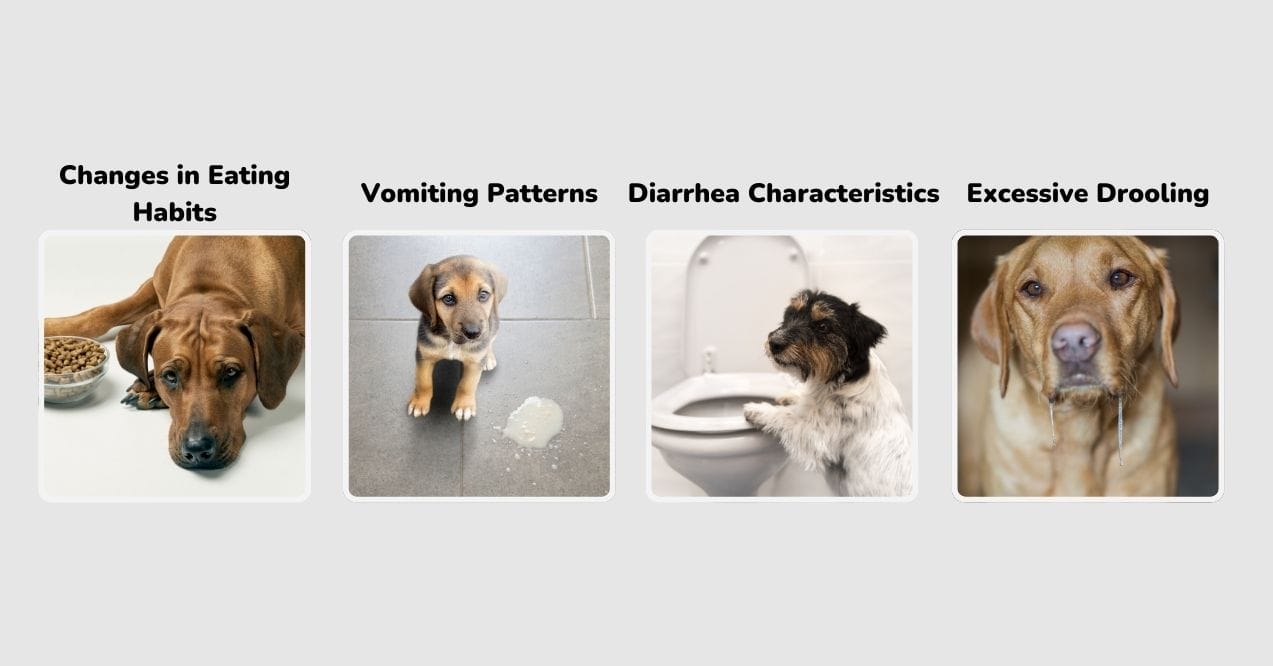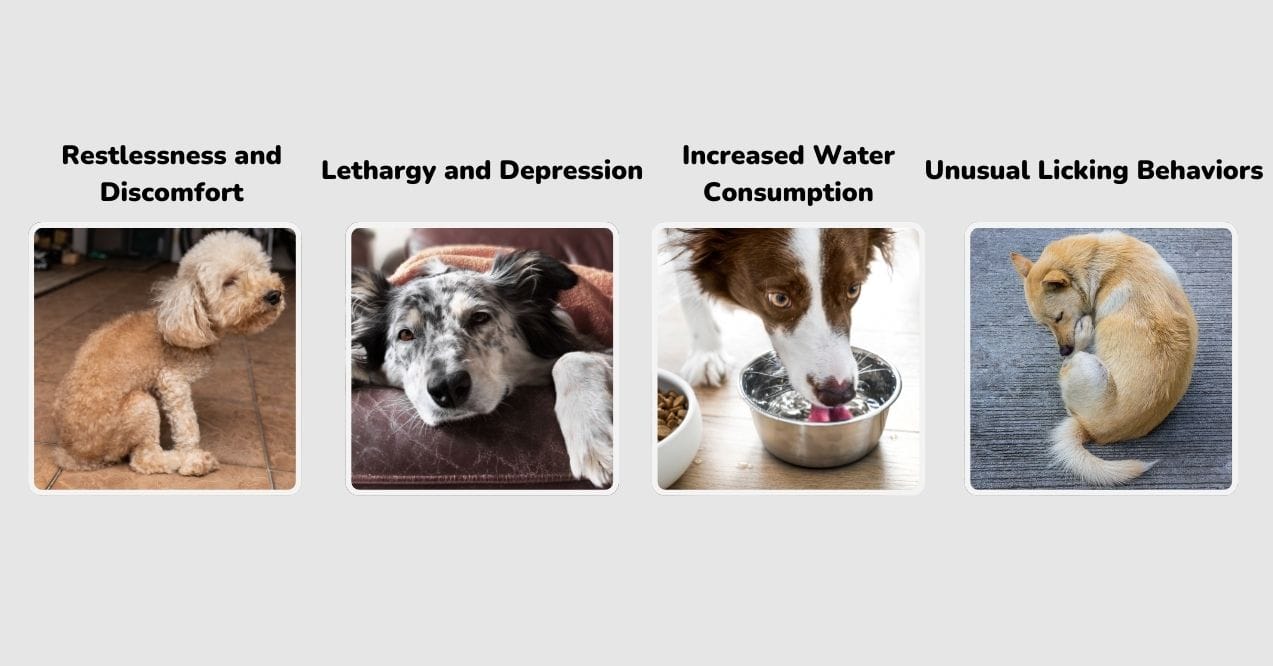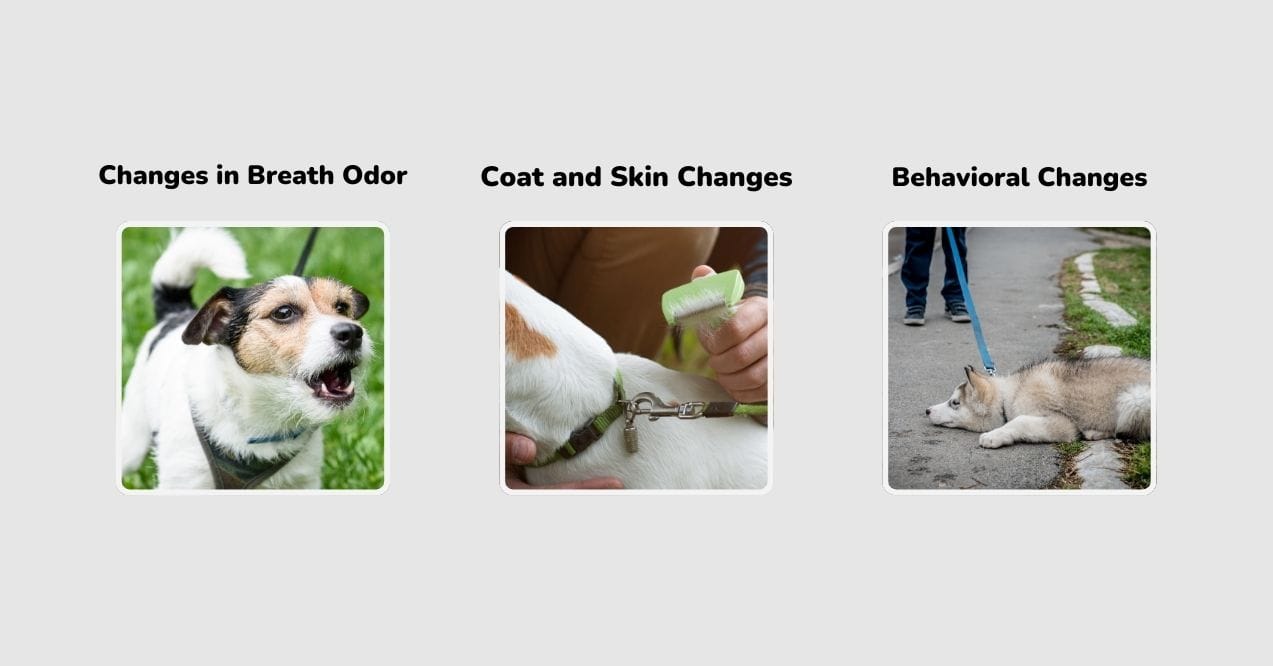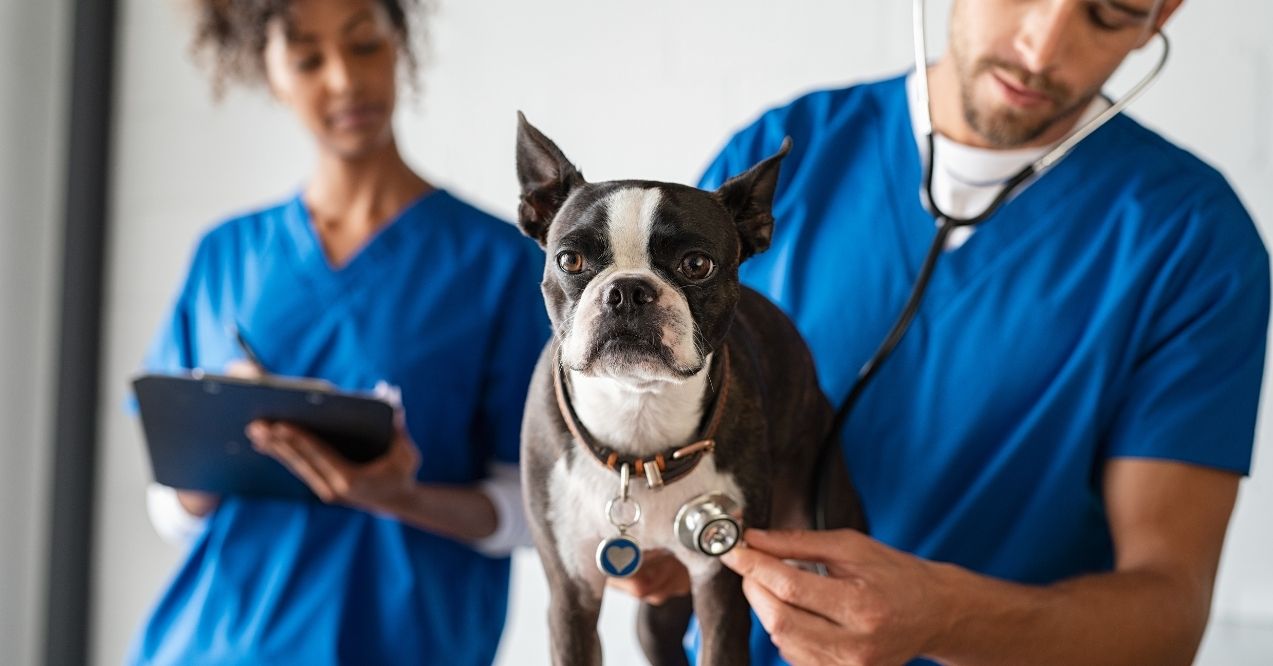11 Signs of an Upset Stomach in Dogs
Recognizing the signs of an upset stomach in dogs is crucial, as digestive issues are common in canines and can lead to more serious concerns if left unaddressed. In fact, more than 10% of all new veterinary visits are related to gastrointestinal (GI) problems. Early detection plays a key role in ensuring your dog’s well-being, as prompt attention can help alleviate discomfort and promote a faster recovery. Therefore, in this blog, we’ll explore the various symptoms of an upset stomach in dogs so you can better understand when your dog might need support for healthy digestion.
Common Dog Upset Stomach Symptoms

Recognizing the signs of upset stomach in dogs can help you respond quickly to alleviate their discomfort and promote better health. While some symptoms are easy to identify, others can be more subtle and may require a closer look.
Changes in Eating Habits
One of the earliest signs of upset stomach in dogs is a noticeable change in their eating habits. Some dogs may completely refuse food, while others might display an unusual increase in appetite. Additionally, a condition known as “pica” – where dogs eat non-food items like grass, dirt, or even objects around the house – can signal digestive distress.
This behavior often arises from an instinctual attempt to soothe their stomach. It’s also important to note that different breeds may exhibit varying eating behaviors when experiencing discomfort. Some dogs may avoid their meals altogether, while others might show more subtle changes, such as being selective about what they eat or avoiding favorite treats.
Vomiting Patterns
Vomiting is a clear sign of an upset stomach, but understanding its patterns is also important. Acute vomiting occurs suddenly and usually just once, while chronic vomiting is repeated over a period of time. To gauge the severity, the “stopwatch method” can be useful in tracking how often your dog vomits.
Additionally, the contents of the vomit offer insights – partially digested food can indicate slow digestion or food intolerance, while bile, a yellowish liquid, often points to an empty stomach. It’s also important to consider external factors like environmental triggers or medications that may contribute to vomiting.
Diarrhea Characteristics
Diarrhea is another noticeable sign of stomach upset, and the “fecal score chart” can help assess stool consistency. A dog’s diet, particularly its fiber content, plays a significant role in stool formation. Watch for unusual signs such as mucus or blood in the stool, as these can point to parasitic causes or other underlying concerns. Monitoring these characteristics will help you better understand the severity of your dog’s digestive upset.
Excessive Drooling
Excessive drooling can often accompany nausea, as there is a neurological connection between nausea and salivation. This hypersalivation can also be triggered by the ingestion of certain toxins or environmental irritants.
Distinguishing between normal slobber, which is common in certain breeds, and excessive drooling that signals an upset stomach is important, especially if it occurs alongside other digestive symptoms.
Behavioral Indicators

Behavioral changes are often one of the first signs that a dog is experiencing digestive discomfort. By closely observing your dog’s actions, you can identify these key indicators of an upset stomach.
Restlessness and Discomfort
When dogs are experiencing abdominal pain, they often adopt specific postures to protect their stomachs. This can include “abdominal guarding,” where a dog tenses its belly muscles or curls into a ball to shield the painful area. Nighttime restlessness, such as pacing or frequent changes in sleeping position, can also signal digestive discomfort. If your dog seems unusually agitated at night, it might be a sign of stomach upset.
Lethargy and Depression
Dogs often display what is known as “sickness behavior” when they are in pain, withdrawing from normal activities or even becoming unusually aggressive. Lethargy is common when a dog is unwell, but it’s important to distinguish between normal tiredness and concerning lethargy. If your dog is excessively tired and uninterested in favorite activities, this could indicate more than just fatigue.
Increased Water Consumption
An increase in water consumption can be a subtle but significant sign of an upset stomach. Digestive issues may lead to dehydration or electrolyte imbalances, causing your dog to drink more water. Monitoring and accurately measuring water intake can help detect potential problems early. Encouraging hydration, especially during stomach upset, is essential to maintain overall health.
Unusual Licking Behaviors
Unusual licking, such as “lip-smacking” or obsessive paw-licking, can be signs of nausea or acid reflux. Dogs often use licking as a self-soothing mechanism, so if your dog is persistently licking its paws or lips, it could indicate underlying digestive discomfort.
Audible and Physical Signs

In addition to behavioral changes, dogs often exhibit audible and physical signs when experiencing stomach discomfort. Paying attention to these cues can help you detect issues early and respond appropriately.
Stomach Gurgling and Gas
Stomach gurgling, medically known as “borborygmi,” is a normal digestive sound, but excessive gut noises may indicate an upset stomach. Diet plays a significant role in the production of gas, and certain foods may lead to excessive gurgling.
To assess your dog’s stomach sounds, use a “gurgle guide” – normal gut sounds should be occasional and not overly loud. If your dog’s stomach seems particularly noisy or if gas becomes a regular issue, it could be a sign of digestive trouble.
Abdominal Sensitivity
Palpating your dog’s abdomen at home is a helpful technique for identifying signs of tummy ache in dogs. Gently pressing along the stomach can reveal whether your dog is experiencing generalized discomfort or more localized pain.
Keep in mind that obesity can mask some of these signs, making it harder to detect discomfort in heavier dogs. If your dog reacts to gentle pressure by flinching or pulling away, it may indicate abdominal sensitivity.
Visible Bloating
Visible bloating can range from a simple gas buildup to a more severe condition, which could be life-threatening and requires immediate attention. Some breeds, especially large and deep-chested dogs, are more prone to bloat.
To monitor for bloating, you can measure your dog’s abdominal girth regularly. Also, certain medications or underlying conditions can lead to fluid retention, so it’s important to differentiate between simple gas bloat and other causes of abdominal swelling.
Subtle Indicators

In addition to more obvious signs, dogs may display subtle indicators of digestive discomfort that are easy to overlook. These clues can provide early warning of underlying issues.
Changes in Breath Odor
Changes in your dog’s breath can be a sign of digestive problems. A sour or unusually foul odor may indicate issues with digestion, while a sweet or fruity smell could point to certain metabolic disorders. There’s also a strong connection between oral health and digestion, as poor dental hygiene can exacerbate digestive symptoms. Monitoring your dog’s breath can give you insight into their digestive health.
Coat and Skin Changes
The “gut-skin axis” refers to the connection between digestive health and skin condition. When dogs experience nutrient malabsorption, it can impact the quality of their coat, causing it to become dull, dry, or brittle. Skin changes, such as redness, itching, or rashes, can also signal food sensitivities or allergies, which are common dog upset tummy symptoms. Paying attention to the condition of your dog’s skin and coat can help you detect potential digestive issues early on.
Behavioral Changes
Dogs can mirror their owners’ emotions, a phenomenon known as “emotional contagion,” especially when they are unwell. Pain from an upset stomach may cause your dog to become withdrawn or show reluctance toward routine activities like walking or playing. Creating a calm, supportive environment can help alleviate some of the stress and discomfort your dog might be experiencing.
When to Be Concerned
Digestive issues in dogs can range from temporary discomfort to chronic concerns. For acute issues like vomiting or diarrhea, a “watchful waiting” approach can be appropriate if symptoms resolve within 24 hours. However, if symptoms persist or worsen after this period, it’s important to seek further guidance. For practical at-home care tips, check out how to help a dog’s upset stomach.
In many cases, simple dietary adjustments or safe remedies can help ease your dog’s digestive discomfort. If you’re looking for food and supplement options, explore what can I give my dog for an upset stomach for effective dietary solutions.
However, chronic digestive issues—such as ongoing changes in eating habits or repeated vomiting—should always be addressed promptly. Keeping a symptom journal for your dog can be an effective way to track patterns. Note any changes in appetite, behavior, or physical signs like vomiting and diarrhea, along with the frequency and severity of symptoms.
This information can help you and your vet identify potential triggers and determine the best course of action. If your dog displays severe signs like bloating, excessive vomiting, or lethargy, immediate attention may be necessary to prevent more serious complications.
Conclusion
Recognizing the signs of upset stomach in dogs is essential for ensuring their overall well-being. From changes in eating habits to more subtle indicators like behavior shifts or breath odor, paying attention to these symptoms can help you catch digestive issues early. While some symptoms may resolve quickly, others may signal the need for further action. By staying vigilant and keeping a symptom journal, you can better support your dog’s digestive health and know when it’s time to seek additional care.
Yes, panting can be a sign of an upset stomach in dogs. It may indicate pain, discomfort, or nausea associated with digestive issues, especially when combined with other symptoms like restlessness, drooling, or changes in behavior.
Yes, stress can cause an upset stomach in dogs. Signs include changes in eating habits, vomiting, diarrhea, and restlessness. Monitoring their behavior and digestive symptoms during stressful situations can help identify if stress is the trigger.
Breed-specific traits can influence how dogs show stomach upset symptoms. Some breeds may be more prone to conditions like bloating or sensitive digestion, while others might exhibit more subtle signs, such as changes in eating habits or behavior.
Advertisement. This site offers health, wellness, fitness and nutritional information and is designed for educational purposes only. You should not rely on this information as a substitute for, nor does it replace, professional medical advice, diagnosis, or treatment. If you have any concerns or questions about your health, you should always consult with a physician or other health-care professional. Do not disregard, avoid or delay obtaining medical or health related advice from your health-care professional because of something you may have read on this site. The use of any information provided on this site is solely at your own risk.



















